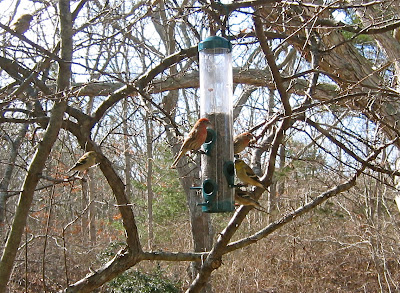Seeking Answers To Herring’s DeclineBy Martha V. Scanlon

Foto de Gene M. Marchand
The water temperature is just below 40 degrees, and the air is not much warmer. The sun is setting over Vineyard Sound, as Rita Oliveira Monteiro wades into Trunk River for the beginning of a long, cold night searching for alewives.
“You can spend five hours just to get one fish. Just that one is like a trophy,” Ms. Monteiro said, adding, “One is so different from zero.”
A graduate student working on her doctorate at the Marine Biological Laboratory, Ms. Monteiro is collecting alewives, a type of river herring, in an attempt to establish a link between the once hardy, but now diminished, fish stock and increased development on Cape Cod and throughout New England. The fish begin their annual trek to spawning grounds in the early spring.
Ivan Valiela, a professor in the Boston University Marine Program at MBL and an adjunct scientist at the MBL’s Ecosystems Center, described alewives as a historically important fish stock on Cape Cod, and “a staple of historical notice for decades if not centuries.”
Over the last several decades, however, the population of alewives has declined significantly, and in November 2005, the state imposed a moratorium on the harvest, possession, and sale of river herring.
While the decline can be attributed to over-fishing and by-catch, when the fish that are not the target crop are caught then discarded, Dr. Valiela said, Ms. Monteiro’s research is looking at another potential contributing factor: damage to the alewives’ breeding habitat from development.
Increasingly, Ms. Monteiro said, researchers are finding that fish stocks have died “a death of a thousand little cuts,” with many contributing factors. She said that it is not just over-fishing and by-catch that contribute to fisheries problems, “but what is happening on land.”
Alewives are especially sensitive to the effects of development because they depend on inland waterways for their reproduction. Similar to salmon, alewives spawn in shallow, inland waters in the spring, then spend their mature years in the open ocean. Around age 3, they migrate in the spring back to the waters where they were born to spawn and return to the sea in the late summer and fall.
Ms. Monteiro is collecting fish from herring runs around Falmouth and other towns on Cape Cod, which Falmouth Department of Natural Resources Assistant and Herring Constable Director R. Charles Martinsen III has helped her identify. Mr. Martinsen has also helped Ms. Monteiro on many of her collecting expeditions.
They started at runs near Wing Pond and Cedar Lake in North Falmouth, which both drain into Buzzards Bay, and Trunk River in Falmouth, because they are known for having herring earlier in the season, she said. In a night of collecting, they will visit each run at least once.
So far, Ms. Monteiro said that they have found alewives in all the runs, averaging about 10 inches in length, primarily at night when the tide is rising. At the peak of the migrating season, when the water warms up, she aims to collect 30 fish per night, she said.
In Trunk River, they found alewives in the first week of March, which Ms. Monteiro attributed to a string of warm days early in the month that prompted some of the fish to “go look” in the waterways. “It was just a few fish that we were able to capture that early,” she said, adding that Mr. Martinsen has found them there as early as February in the past.
“We do know that so far people are aware that Trunk River is the earliest, but maybe that is because it is the only one where people expect to find [alewives] that early,” she said.
Ms. Monteiro will continue to collect the fish into the summer and fall as they leave the inland waterways for the ocean, and eventually hopes to expand her research to New Hampshire and Maine to compare the significantly less developed areas in those states to the developed areas on Cape Cod.
Ms. Monteiro has coordinated her efforts with the local and state agencies that govern the waterways, and is also working with the Woods Hole Research Center and the town to gather GIS data to see the amount of development around the watersheds.
If she is able to establish a significant link between the decline of the alewife population and the increase in development on Cape Cod, Ms. Monteiro said that it can be used to shape management strategies to protect the land surrounding the waterways.
She said that while the town does work to plan its limited available space, she said that marine management plans in coastal areas are especially important. “As I see it, especially in coastal areas, with more and more immigration to coastal areas, and everyone wanting a second house by the water, it’s becoming a pressing issue,” she said.
A native of Lisbon, Portugal, Ms. Monteiro is a postgraduate student at the State University of New York and will spend the next three years working at the MBL on this research as part of a grant fellowship.
She said that ever since she was 10 years old she has wanted to have a career in marine conservation planning, and she wants to dedicate herself to marine conservation planning and the design of marine managed areas. “I’m really happy to just be here and be where I want to work,” she said.

